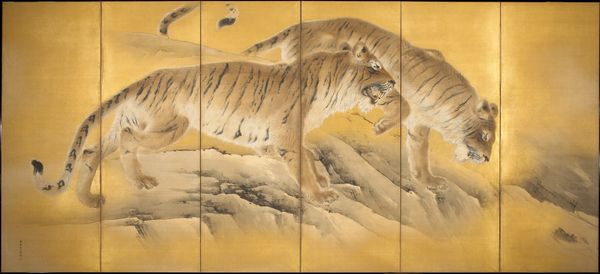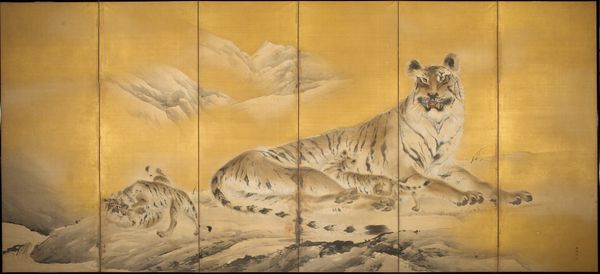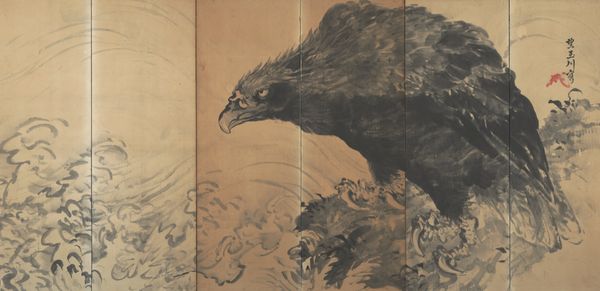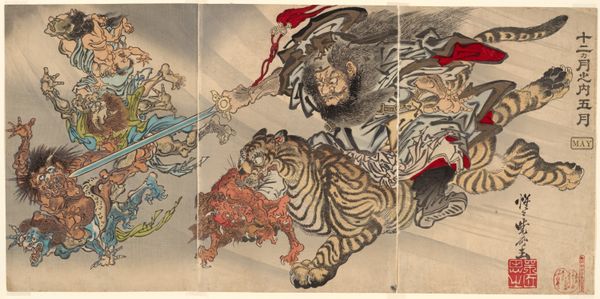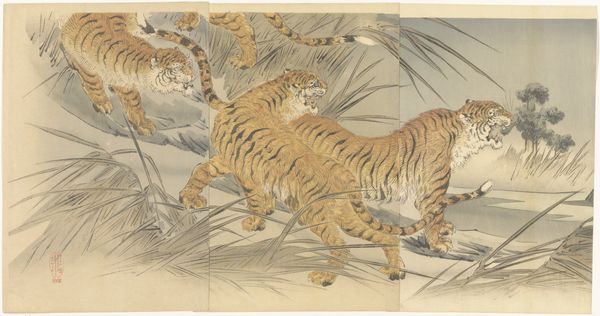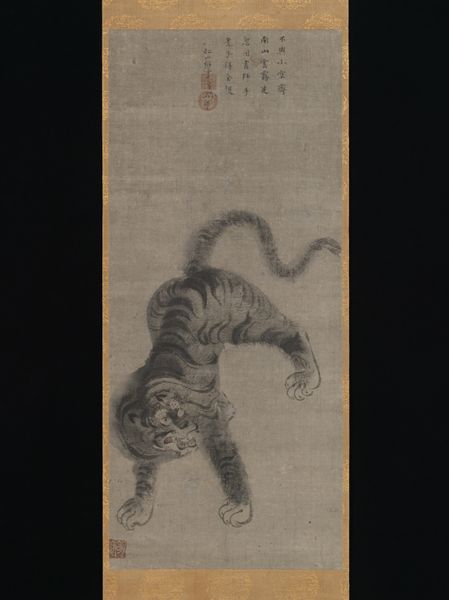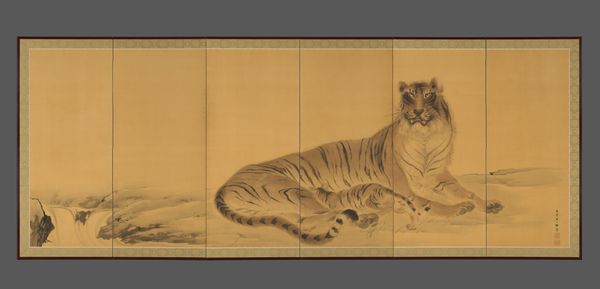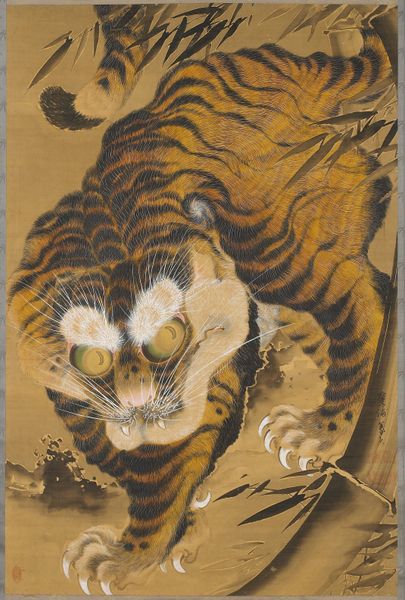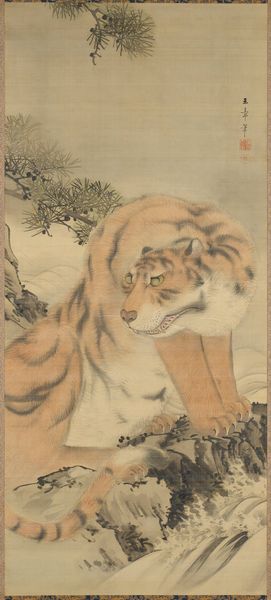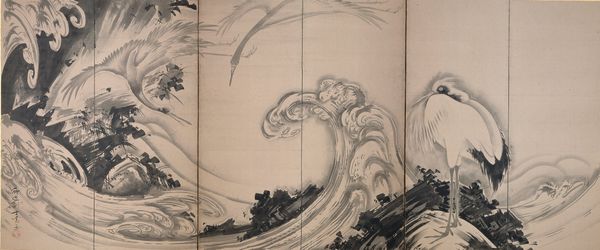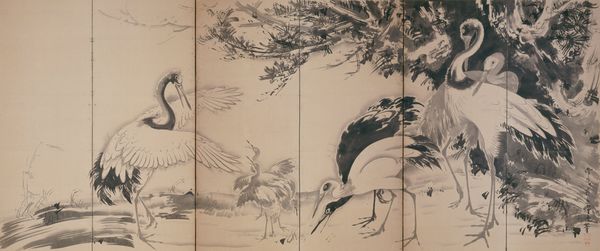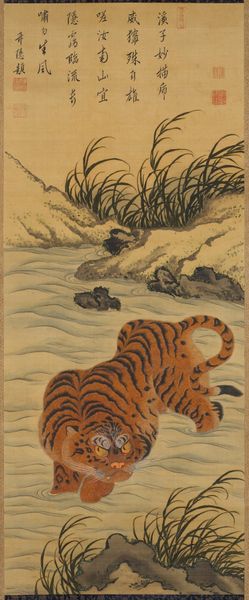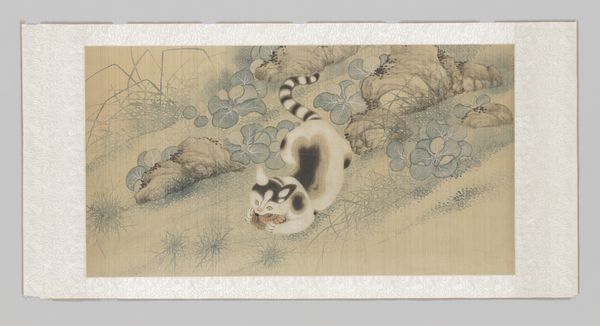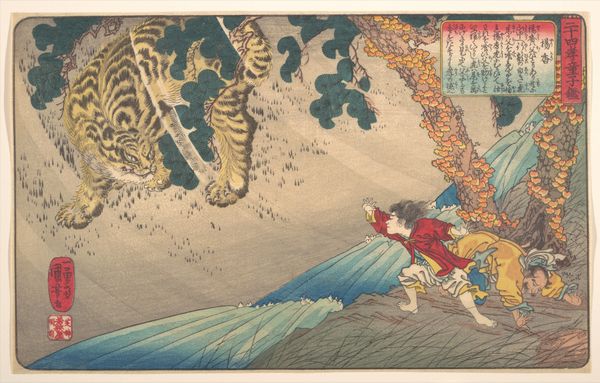![Tiger [left of the pair Dragon and Tiger] by Yamada Dōan](/_next/image?url=https%3A%2F%2Fd2w8kbdekdi1gv.cloudfront.net%2FeyJidWNrZXQiOiAiYXJ0ZXJhLWltYWdlcy1idWNrZXQiLCAia2V5IjogImFydHdvcmtzL2UxZGU1NGMyLTM0ZDYtNDUzNi05M2I0LWI0OTU0ZjRhNTE4Zi9lMWRlNTRjMi0zNGQ2LTQ1MzYtOTNiNC1iNDk1NGY0YTUxOGZfZnVsbC5qcGciLCAiZWRpdHMiOiB7InJlc2l6ZSI6IHsid2lkdGgiOiAxOTIwLCAiaGVpZ2h0IjogMTkyMCwgImZpdCI6ICJpbnNpZGUifX19&w=3840&q=75)
Tiger [left of the pair Dragon and Tiger] c. 16th century
0:00
0:00
painting, paper, ink
#
ink painting
#
painting
#
asian-art
#
landscape
#
figuration
#
paper
#
ink
#
line
#
genre-painting
#
yamato-e
Dimensions: 65 x 141 in. (165.1 x 358.14 cm)
Copyright: Public Domain
Curator: Standing before us is "Tiger [left of the pair Dragon and Tiger]", an ink painting on paper from approximately the 16th century, attributed to Yamada Dôan and currently residing at the Minneapolis Institute of Art. It’s quite striking, wouldn’t you agree? Editor: Indeed. Immediately, I’m captivated by the dynamism. The tiger’s pose, that arched back, it conveys such raw, untamed energy despite the limited palette. It feels as if he's about to leap right out of the composition! Curator: That pose, you see it echoed throughout East Asian art. The tiger represents courage, power, and even royalty, serving as a protector figure warding off evil. Its presence in paintings and screens speaks to its significance as a cultural symbol and a reflection of humanity's complex relationship with nature and the animal kingdom. Editor: It's interesting how the artist uses the bamboo as a grounding element on the left, contrasting with the misty, somewhat ambiguous mountains on the right. This creates a sense of spatial tension, pulling the eye in different directions. Notice, also, how the individual brushstrokes build the overall texture and form. The tiger’s fur is a network of short, sharp marks. Curator: The bamboo is significant too, embodying resilience, integrity, and flexibility in the face of adversity. To feature both a tiger and bamboo may refer to a scholar's tenacity, as he struggles to achieve an ideal life. Also, note the ink’s tonal range, creating depth and atmosphere even without vibrant colors. Editor: I agree; the stark black and white heightens the dramatic effect. The texture of the paper further enhances the nuances within the monochrome ink, revealing subtleties lost otherwise. The work beautifully demonstrates a minimalist elegance where "less" undoubtedly equals "more." Curator: Absolutely. We must remember that this panel once formed part of a pair with a dragon, together embodying yin and yang – balanced cosmic forces – illustrating profound Taoist concepts of universal harmony. Each beast enhances the nature of the other, one in control on land while its partner maintains dominion in the skies. Editor: Looking closely at the tiger’s eyes, I initially found them a bit unsettling. Now I recognize that bold touch adds to its forceful aura and instills an engaging dynamism with the overall aesthetic, urging further appreciation for the work. Curator: Yes, after all, art exists so we may pause, reflect, and question what we observe. Hopefully, by highlighting some cultural clues, that encounter is slightly enriched.
Comments
minneapolisinstituteofart almost 2 years ago
⋮
In traditional Chinese cosmology, the tiger and the dragon are two of four creatures associated with the cardinal directions (north, south, east, and west). The tiger is the emblem of the west, and the dragon, the east. In Zen Buddhism, however, the tiger came to be associated with the earthbound enlightened mind, and the dragon the soaring spirit of the freed, enlightened soul. Paired images of tigers and dragons are frequently encountered in Zen temples in Japan on pairs of screens or on sets of sliding-door paintings.
Join the conversation
Join millions of artists and users on Artera today and experience the ultimate creative platform.
